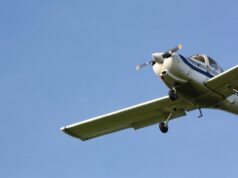
I am to begin instructor-development training with a new flight school in the coming weeks. Included in my initiation package was a letter written by the founder of the company that preceded my flight school. The letter is decades old, but nevertheless, the school provides it to all new flight instructors and expects them to come into training having read it.
The point of the letter is not to insist that we follow methods developed before I was born, when ADF approaches were still the norm. Rather, my company believes that the same commitment to safe, quality instruction still applies, and can still ensure productive, meaningful instruction.
I have used past experiences throughout my career to make myself a safer, more proficient pilot. Whether I have learned from my own actions (or inactions) as a student, consulted others for their experiences, or used online resources like the Air Safety Institute, I have always received great benefit from reflection and proactive preparation.
None of this will come as a novel concept for experienced pilots. After all, any halfway decent flight instructor will, to some degree, encourage this reflection in all their students. However, I worry that what is sometimes lost on pilots is how important it is not just to study accidents and understand the proper actions, but also to practice these safety solutions in their regular flying.
Certainly, I am not immune to this issue, and I have, more than once, found myself reflecting on why I did not handle a situation differently. It’s not that I didn’t understand the risks I was taking in the moment, but it’s that I had never applied the lessons I learned reviewing case studies on the ground to my own flying. Without fully understanding the real-life effects of certain risks, like taking a long single-pilot cross country late at night when fatigue is prevalent, I have been forced to reconcile my decision making in the air, or after the flight, instead of being more conscious beforehand.
There is, of course, only a certain amount of preparation one can actually do before encountering a situation in real life. After all, sterile training environments can only be so realistic when students know what to expect and have a guaranteed safety pilot (their instructors) with them.
The question then becomes how to go a step further from the training environment without putting yourself in an unsafe situation. How can a pilot really appreciate the reality of a situation without taking undue risks?
One practice that I wish I had done more as a student pilot is to use different training tools in conjunction with each other. Take, for example, the risk of a non-IFR pilot flying VFR into IMC. Often, I heard from my instructors about the risks of doing so, and I have reviewed multiple case studies where such an occurrence turned to tragedy. What I should have done more is having been proactive about considering each resource in light of each other. Instead of just listening to my instructor on one day and watching the video together, I could take time to review my notes from a period of ground instruction to remember the risks and then use case studies to see those risks in action.
This practice connects two very important aspects of aviation safety – understanding the risks of a situation and understanding how humans respond to those risks. Again, studying one or the other in isolation can be powerful but might not always deliver the complete picture that a young pilot, or a pilot new to the situation, may need to fully understand the gravity of a situation. Rather, by studying your notes to remember the risks within a situation and going from there to a case study, you can empathize with the pilots, put yourself in their position, and experience the situation with them. You can consider how you would feel in a similar situation and determine how you might act to prepare yourself for a real-world event.
This exercise must go beyond just sitting back to criticize a pilot. Doing so is fairly simple, even for relatively inexperienced pilots, but it makes it easy for a pilot to disassociate from the situation. Remember that the FAA teaches pilots that there is a name for that – the “macho” hazardous attitude occurs when a pilot says, “It can’t happen to me.”
I do not mean to imply that every pilot inevitably puts themselves in a situation of significant risk to their lives, but we cannot ignore that, every once in a while, the limitations of weather reporting, ATC vectoring, aircraft capabilities (including onboard weather radar), and pilot skill align. Avoiding that macho attitude by taking the time to fully immerse yourself in a case study before you leave the ground may be the trick that allows pilots to recognize subliminal warning signs before it’s too late. Even if a pilot decides to go despite the odds, understanding the risks involved may be the catalyst that encourages extra safety measures like taking a safety pilot, or more thoroughly investigating alternate options.
I cannot help but reflect on my duty as a soon-to-be flight instructor to guide my students towards strong, complete decision-making skills. I know that returning to that letter from our predecessor will be a worthwhile endeavor to remember just how important my duty to my students will be. I must certainly take the time to reflect on my own experiences and impart my own wisdom as appropriate.
I certainly have a lot to learn regarding how I will teach, what I will teach, and perhaps most importantly, when I will teach. As the FAA teaches flight instructor candidates, I must also remember that my actions as an instructor will have a great impact on my students’ actions regardless of what I verbally tell them. So, here’s to using past experiences to my advantage throughout my career and here’s to learning even more as an instructor so I can provide the best, safest, highest-quality instruction I can each day I come to work.




















































